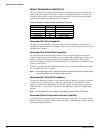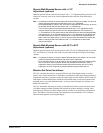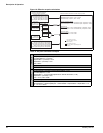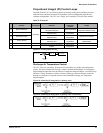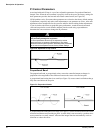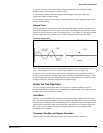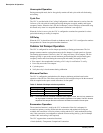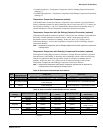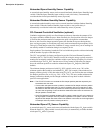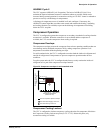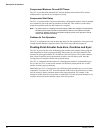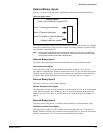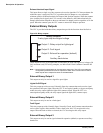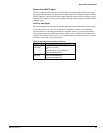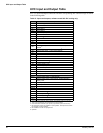
34 McQuay OM 751
Description of Operation
Networked Space Humidity Sensor Capability
A networked space humidity sensor can be network interfaced with the Space Humidity Input
variable. When the Space Humidity Input variable is used (valid value), it automatically
overrides the hard-wired space humidity sensor (if present).
Networked Outdoor Humidity Sensor Capability
A networked outdoor humidity sensor can be network interfaced with the Outdoor Humidity
Input variable. When the Outdoor Humidity Input variable is used (valid value), it
automatically overrides the hard-wired outdoor humidity sensor (if present).
CO
2
Demand Controlled Ventilation (optional)
Ventilation equipment typically uses fixed damper positions to determine the amount of OA
for proper ventilation within the space. Most commonly, the fixed position of the OA damper
is based on the maximum number of occupants the space is designed to accommodate.
However, this fixed OA damper operation ignores the fact that most spaces during the day
have varying occupancy levels and may only rarely reach maximum design occupancy levels.
This type of fixed damper control for ventilation is energy wasteful since you are treating OA
not actually needed for ventilation during low occupancy levels.
People produce CO
2
when they breath; the CO
2
level within the space has a direct relationship
with the number of people within that space.
The UVC can optionally be factory configured to provide CO
2
-based Demand Controlled
Ventilation (DCV). The CO
2
DCV function is useful in saving the energy typically wasted in
treating OA not actually needed for ventilation within a space during occupancy levels below
maximum design. The CO
2
DCV function uses a PI-loop control to adjust the OA damper
above the minimum position as needed to maintain the Space CO
2
Setpoint (1200 PPM
default).
The minimum damper position used with CO
2
DCV typically can be set at ~20% of the
minimum position that would be used without CO
2
DCV. For example, if the minimum OA
damper position typically is 20% then when using CO
2
DCV, you could set the new minimum
OA damper position as low as 4% (e.g., 20% × 0.20 = 4%). This new, smaller minimum OA
damper position then should provide enough ventilation to keep odors in check within the
space for most applications.
Note – The CO
2
DCV function can increase the OA damper position past that required by the
economizer and vice versa.
– If odors within the space become a problem, increase the OA damper minimum position
as needed to eliminate these odors. It may be necessary with new construction or after
renovation to raise the minimum position for some time period to help reduce odor build-
up due to the out-gassing of new construction material and then return the minimum OA
damper position at a later date.
– If the CO
2
Demand Controlled Ventilation (DCV) option is used, the UVC only uses the IA
fan high speed OA damper minimum position regardless of fan speed. The DCV function
adjusts the OA damper above this minimum as needed. In this case, the IA fan high speed
OA damper minimum position is factory set at 5%.
Networked Space CO
2
Sensor Capability
A networked space CO
2
sensor can be network interfaced with the Space CO
2
Input variable.
When the Space CO
2
Input variable is used (valid value), it automatically overrides the hard-
wired space CO
2
sensor (if present).



